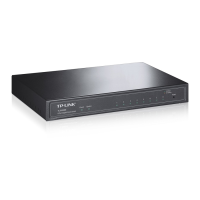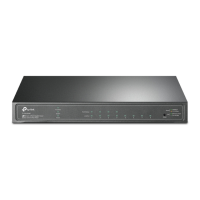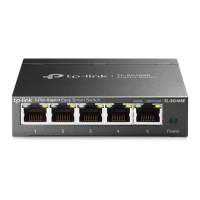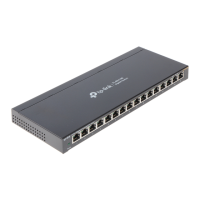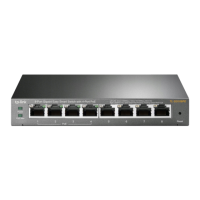97
Parameter
name —— The PoE profile name, ranging from 1 to 16 characters. If the name
being assigned contains spaces then put it inside double quotes.
supply —— The PoE status of the port in the profile. By default, the PoE status
is “enable”.
priority —— The PoE priority of the port in the profile. The priority levels include
“high”, “middle” and “low” in descending order. When the supply power exceeds
the system power limit, the PD linked to the port with lower priority will be
disconnected. By default, the PoE priority is “low”.
consumption —— The max power the port in the profile can supply, with five
options: “power-limit”, “auto”, ”class1”, “class2”, “class3” and “class4”.
“Power-limit” indicates you can manually enter a value ranging from 1 to 180.
The value is in the unit of 0.1 watt. For instance, if you want to configure the max
power as 5w, you should enter 50. “Auto” indicates the value is assigned
automatically by the PoE switch. “Class1” represents 4w. “Class2” represents
7w. “Class3” represents 15.4w. “Class4” represents 30w.
Command Mode
Global Configuration Mode
Example
Create a PoE profile named “IP Camera” whose PoE status is “enable”, PoE
priority is “low” and the power limit is “5w”:
TL-SG2424P(config)# power profile “IP Camera” supply enable priority
low consumption 50
power time-range
Description
The power time-range command is used to create PoE time-range for the
switch and enter Power Time-range Create Configuration Mode. After a PoE
time-range is created, you need to specify the date and time which has three
mode options: absolute, periodic and holiday. A PoE time-range can implement
multiple time-ranges simultaneously as long as they do not conflict with each
other. To delete the corresponding PoE time-range configuration, please use no
power time-range command.
The PoE time-range determines the power
supply time of the switch. You can specify a PoE time-range for each PoE port
individually.

